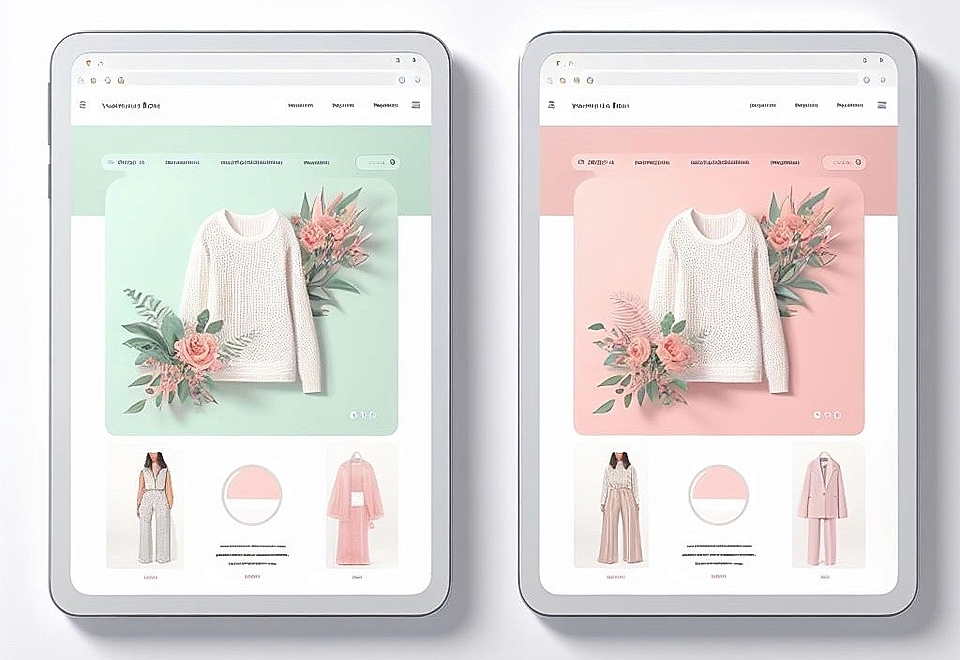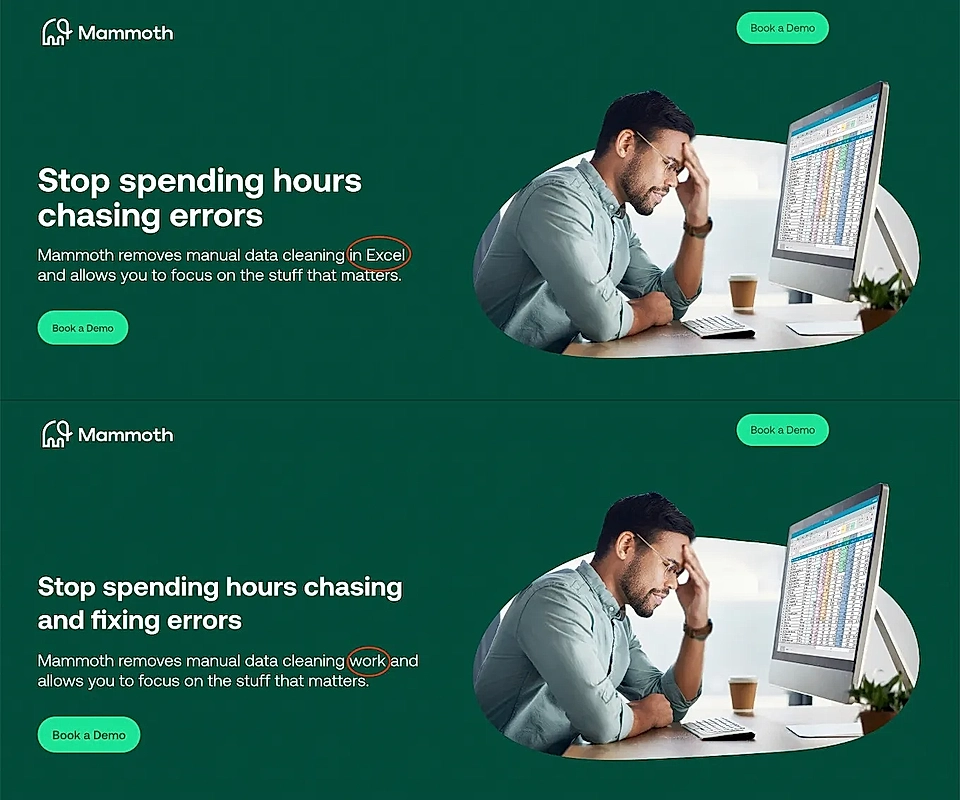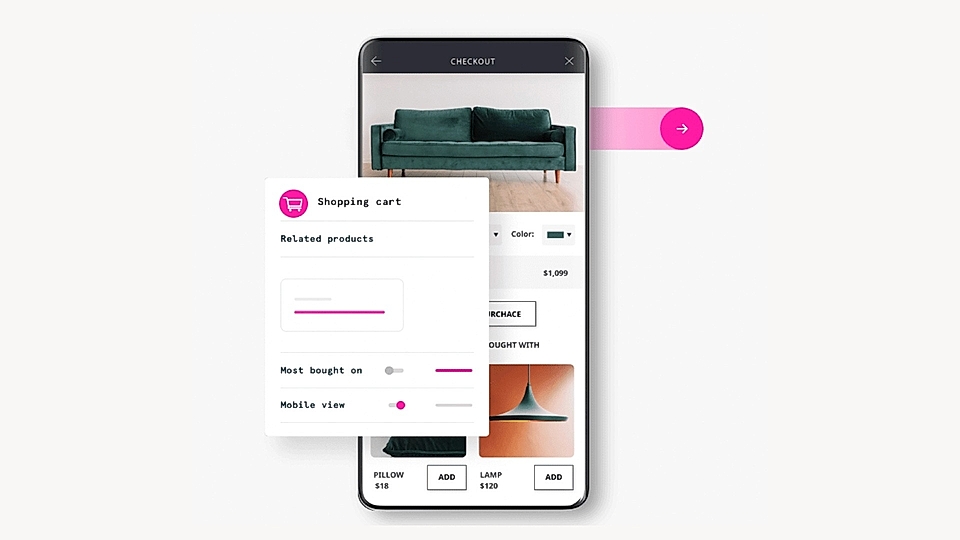Why to use dynamic landing pages: Four examples and tips for marketers
If you’ve ever managed a Google Ads campaign, you might be familiar with the 'Quality Score’. The Google Ads Quality Score indicates how well (or poorly) your landing page matches keywords in your ad campaign. The higher the score, the more likely Google will show your ad in the auction.
The best way to increase your ‘Quality Score’ is to keep your keywords substantially few and create unique landing pages where the content closely matches the search phrase and ad assets.
However, you might have experienced the same problem I’ve seen everywhere – a lack of resources and tools to create a high volume of landing pages.
That’s where dynamic landing pages can help.
Google Ads campaigns are one of the most typical use cases for dynamic landing pages. Instead of building a lot of pages, a dynamic landing page template can serve multiple campaigns by automatically adjusting the title and copy text based on a keyword.
What is a dynamic landing page?
There are two types of dynamic landing pages.
Firstly, a landing page can be personalized for each visitor based on user behaviour, such as the ad they clicked, the previous page they visited on your website or their location. Many website builders, such as Hubspot and WordPress, provide easy-to-use tools to insert keywords in landing pages dynamically.
Secondly, landing pages can be optimized for every visitor through A/B testing, where different page variations are shown to a certain percentage of users. The idea of A/B testing is to understand which landing page version has the highest engagement and conversion rate. Tools like Optimizely, VWO, and CrazyEgg allow you to run a test and measure page variants before choosing the best-performing one.

Whether you are personalizing or A/B testing, a dynamic landing page provides a different experience to specific user segments based on rules set by the website developer or automatically through machine learning and AI.
Optimizing dynamic landing pages
Before creating dynamic landing pages, ensure your team has a set of content optimization tools. It’s one of the most common pitfalls to personalize landing pages before analyzing the existing performance and fixing the issues that currently hurt your bottom line.
Suppose you have a website hero section that doesn’t resonate with your audience and you are seeing low engagement and conversion rates – personalization won’t magically turn the page performance upside down.
For a thorough analysis, look at Google Analytics to see which landing pages are performing better than others and whether you should incorporate some of the critical ingredients of successful pages into poorly performing ones. Use tools like Hotjar to see what users are actually doing on your page and if they get value or get stuck with a specific part of the page and user journey. If possible, ask for user feedback to understand what’s stopping page visitors from converting to customers.
After the analysis and page updates, here are some of the most obvious landing page parts to optimize:
- Headlines and texts: The hero and the main title are usually the first things a user will see on your landing page, and they set the tone for the rest of the journey. Use AI writing tools like Jasper or Copy.ai to create more compelling headline versions for A/B testing, or use landing page tools like LandingRabbit to personalize the title to match the search phrase. When generating the personalized version, ensure you are not stuffing too many keywords and that the whole text works with different phrases.
- Call-to-actions: Call-to-actions can either decrease or increase your conversion rates. For example, you might ask first-time visitors to leave their email addresses to receive a discount coupon on their first purchase. It’s a relatively small ask with a significant benefit, and your conversion rate is typically high. On the other hand, if you ask users to sign up for a SaaS and pay the first month immediately, the conversion rate is much lower. The call-to-action text plays a significant role in convincing the user to take action. The bigger the ask, the more critical A/B testing and personalization of the landing page become.
Four dynamic landing page examples
I’m sure you’d like to see how dynamic landing pages work – let’s take a look at four concrete examples.
1. Dynamic landing pages for advertising
A straightforward example of a dynamic landing page for PPC is personalizing the page’s main title based on the ad campaign and keyword. For instance, visitors might search for a data management tool to clean errors in their data set or a more specific tool integrated with Excel. The landing page copy is the same for both ad campaigns – except the text below a hero title, which changes automatically and includes “in Excel” for visitors searching for the integration.

Tools like Landingi’s dynamic landing pages can help you get started with personalization without coding skills.
2. Dynamic landing pages based on customer journeys
Another great example is landing pages customized based on the buyer journey.
For instance, a visitor might make a purchase on your website and your call-to-action texts on a product page change from ‘Buy now’ to ‘See accessories’. Or perhaps your webshop uses a website personalization tool like Frosmo to show highly targeted and relevant ‘You might also like’ elements straight after purchase, combining user-specific data and similar user segments.

3. Dynamic landing pages based on location
Websites can easily identify visitors’ locations through their IP addresses, and customizing the website increases conversion rates.
The most simple and obvious format of location-specific information is to show prices in the user’s currency. I’m sure some of your favourite webshops have asked you to confirm your language version and location or they automatically direct your browser to a country-specific version to make sure they can provide the best possible service.

4. Dynamic landing pages with content optimization
Content optimization differs from the three previous examples as it doesn’t necessarily include personalization. Unless your users are regular, signed-in customers, personalization is often limited to a few data points like the traffic source, user’s journey during the visiting session, and location.
Content optimization through A/B testing ensures you constantly find higher converting variations of copy texts, images, videos, CTA elements, and more.

A fantastic example is Unbounce’s Smart Traffic landing page, which will automatically drive traffic to the best-performing variant of your page. Using AI, Unbounce automatically detects which landing page is best for your visitors – no matter how many variants you’ve got.
Conclusion
If you plan to build dynamic landing pages, ensure you are already continuously optimizing your content and improving website through A/B testing and AI-powered tools. Personalizing the user experience can only increase your page engagement and conversion rates once you’ve got the best possible headlines, body texts, images and videos, and call-to-action elements that are continuously tested and improved.
Sometimes, creating variations is the bottleneck. With LandingRabbit, you get help in planning and visualising pages for your team to review. Sign up for our 14-day free trial today and plan SaaS landing pages without the back-and-forth and guesswork.